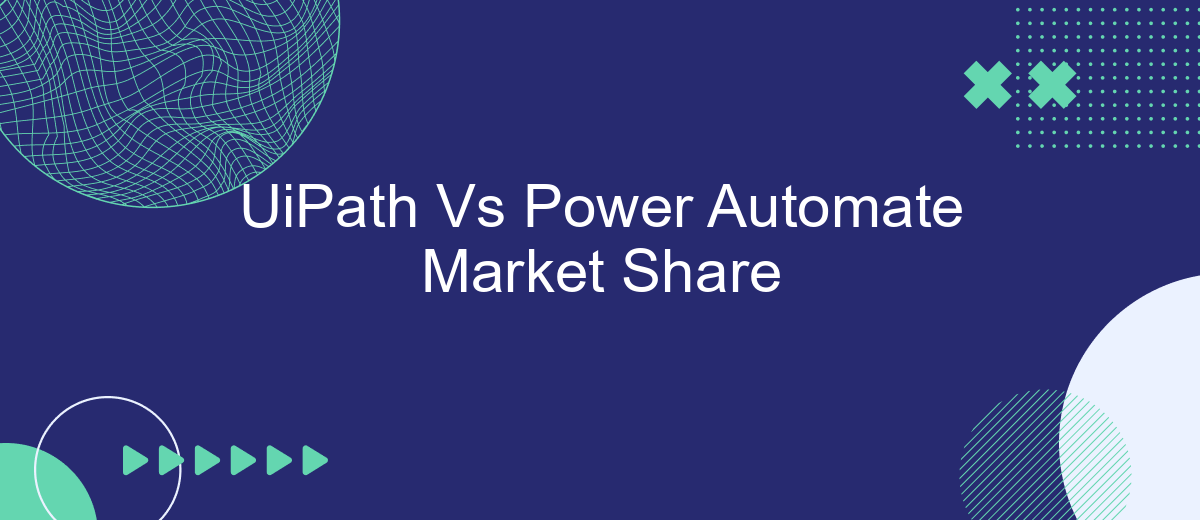In the rapidly evolving landscape of robotic process automation (RPA), UiPath and Power Automate stand out as two dominant players. This article delves into their market share, comparing their growth trajectories, user adoption rates, and overall impact on the industry. By examining these key metrics, we aim to provide a clear picture of their competitive positioning in the RPA market.
Market Overview
The market for robotic process automation (RPA) tools has seen significant growth in recent years, with UiPath and Power Automate emerging as two of the leading platforms. Both tools offer unique features and capabilities that cater to different business needs, making them popular choices for organizations looking to automate repetitive tasks and improve operational efficiency.
- UiPath: Known for its comprehensive suite of automation tools, strong community support, and extensive training resources.
- Power Automate: Part of the Microsoft ecosystem, it integrates seamlessly with other Microsoft products and offers a user-friendly interface for creating automated workflows.
- SaveMyLeads: A service that simplifies the process of setting up integrations, making it easier for businesses to connect their RPA tools with other applications and services.
As companies continue to seek ways to streamline their operations and reduce costs, the demand for RPA solutions like UiPath and Power Automate is expected to grow. Understanding the strengths and use cases of each platform can help organizations make informed decisions about which tool best suits their automation needs.
UiPath Market Share

UiPath has established itself as a dominant player in the Robotic Process Automation (RPA) market. With its robust suite of tools, UiPath enables businesses to automate repetitive tasks, streamline workflows, and enhance operational efficiency. The platform's user-friendly interface and extensive capabilities have attracted a wide range of industries, from finance to healthcare, contributing significantly to its market share. UiPath's strong presence is further bolstered by its continuous innovation and commitment to customer satisfaction, making it a preferred choice for enterprises looking to adopt RPA solutions.
One of the key factors driving UiPath's market share is its ability to integrate seamlessly with various third-party applications and services. For instance, services like SaveMyLeads facilitate easy integration by automating the transfer of data between different platforms, thereby enhancing the overall functionality of UiPath's RPA solutions. This capability not only simplifies the automation process but also allows businesses to leverage their existing systems more effectively. As a result, UiPath remains a competitive force in the RPA market, continually expanding its user base and market influence.
Power Automate Market Share

Power Automate, a robust automation tool from Microsoft, has been gaining significant traction in the market. Its integration capabilities, user-friendly interface, and extensive feature set make it a popular choice among businesses looking to streamline their workflows and enhance productivity. As a part of the Microsoft Power Platform, it seamlessly integrates with other Microsoft services such as Office 365, Dynamics 365, and Azure, providing a comprehensive solution for various automation needs.
- Extensive integration with Microsoft services
- User-friendly interface
- Wide range of pre-built templates
- Scalability for businesses of all sizes
- Strong community and support
Additionally, Power Automate's ability to connect with third-party applications further extends its usability. Services like SaveMyLeads simplify the process of integrating various apps and services, enabling businesses to automate lead generation and management efficiently. This flexibility and comprehensive support make Power Automate a formidable player in the automation market, continually expanding its market share.
Comparative Analysis

When comparing UiPath and Power Automate, it's essential to consider their market share and specific strengths. UiPath has established itself as a leader in the robotic process automation (RPA) industry, with a strong focus on enterprise-grade solutions. On the other hand, Power Automate, part of the Microsoft Power Platform, leverages its seamless integration with other Microsoft products and services, making it a popular choice for businesses already within the Microsoft ecosystem.
Both platforms offer robust automation capabilities, but their market share reflects their different approaches and target audiences. UiPath's extensive features and scalability make it ideal for large organizations, while Power Automate's user-friendly interface and integration with Microsoft tools cater to small and medium-sized businesses.
- UiPath: Strong enterprise focus, extensive features, high scalability.
- Power Automate: Seamless Microsoft integration, user-friendly, ideal for SMBs.
Additionally, services like SaveMyLeads enhance the integration capabilities of these platforms by providing automated data transfer between various applications. This can be particularly beneficial for businesses looking to optimize their workflows without extensive manual intervention. Ultimately, the choice between UiPath and Power Automate will depend on the specific needs and existing infrastructure of the organization.
Future Outlook
The future outlook for UiPath and Power Automate in the market is promising, with both platforms poised to capitalize on the increasing demand for automation solutions. As businesses continue to seek efficiencies and streamline operations, the adoption of these tools is expected to grow significantly. UiPath, with its robust capabilities in robotic process automation (RPA), is likely to maintain a strong position, especially among enterprises looking for comprehensive automation solutions. On the other hand, Power Automate, integrated seamlessly with Microsoft's ecosystem, offers a compelling choice for organizations already leveraging Microsoft products.
Moreover, the integration capabilities of these platforms will play a crucial role in their future success. Services like SaveMyLeads, which facilitate seamless integration between various applications, will become increasingly important. By enabling smooth data flow and automation across different systems, such services can enhance the value proposition of both UiPath and Power Automate. As the automation landscape evolves, the ability to easily integrate and scale solutions will be a key differentiator, driving further adoption and market growth for these platforms.
FAQ
What is the market share of UiPath compared to Power Automate?
Which platform is better for integrating with existing systems?
How do the pricing models of UiPath and Power Automate compare?
Which platform is more user-friendly for non-technical users?
What support options are available for implementing automation with these platforms?
What do you do with the data you get from Facebook lead forms? Do you send them to the manager, add them to mailing services, transfer them to the CRM system, use them to implement feedback? Automate all of these processes with the SaveMyLeads online connector. Create integrations so that new Facebook leads are automatically transferred to instant messengers, mailing services, task managers and other tools. Save yourself and your company's employees from routine work.
